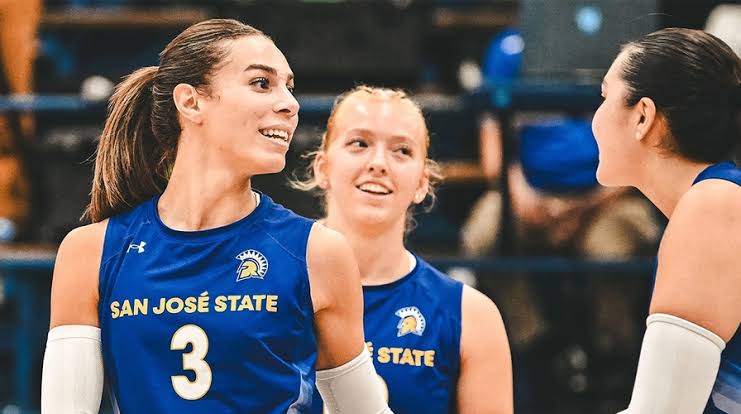
San Jose State Volleyball: Navigating the Storm of Transphobic Hate
In recent months, San Jose State University’s volleyball program has become an unexpected focal point in the national conversation about gender identity and inclusivity in sports. What began as a typical collegiate athletics story quickly escalated into a contentious debate surrounding transphobia, raising questions about culture, policy, and the role of sports in societal change. This article delves into the factors contributing to this situation and explores the broader implications for athletes, the university, and the community at large.
The Controversy Unfolds
The turmoil began when reports surfaced of conflicts between players regarding the inclusion of transgender athletes on the team. The atmosphere at San Jose State, typically one of camaraderie and sportsmanship, was disrupted by public disagreements and heated discussions. Social media amplified these tensions, with players expressing their views both for and against the participation of trans athletes in women’s sports, leading to an environment charged with animosity and division.
The Catalyst: A Transgender Athlete
The controversy was catalyzed by the participation of a transgender athlete on the team. This decision ignited a firestorm of debate, with various stakeholders—including students, alumni, and community members—voicing their opinions. While some defended the inclusion of transgender athletes as a matter of equality and representation, others expressed concerns over competitive fairness and safety.
Social Media’s Role
Social media played a significant role in escalating the situation. Platforms like Twitter and Instagram became battlegrounds for conflicting ideologies, where opinions quickly turned into accusations and hate speech. This digital discourse often oversimplified complex issues, reducing nuanced discussions into binary choices: either one supported trans rights or they were labeled as transphobic.
Amplifying Hate Speech
In the heat of these discussions, transphobic sentiments emerged, often masked as “concerns” about fairness. The anonymity and reach of social media allowed hateful rhetoric to flourish, leading to a toxic atmosphere. Such an environment can have severe repercussions, both for the individuals targeted and for the team’s overall cohesion.
Institutional Response
The university’s response to the unfolding controversy has been mixed, reflecting broader societal struggles with inclusivity and acceptance. While San Jose State has publicly supported its transgender athletes, the lack of a clear, comprehensive policy on inclusivity in athletics has left many feeling unsupported.
A Call for Clear Policies
The absence of concrete guidelines surrounding the participation of transgender athletes has created uncertainty. Players and coaching staff alike expressed confusion about the boundaries of inclusivity and how to navigate these complex issues. This gap in policy not only exacerbated tensions within the team but also highlighted the need for universities to take a proactive stance on inclusivity, ensuring all athletes feel safe and supported.
The Ripple Effect on Team Dynamics
The conflict within the San Jose State volleyball team has strained relationships among players, coaches, and the administration. The sense of camaraderie that is vital for any sports team has been compromised. Players have reported feeling alienated, either by the heated debates or by the public nature of the discussions.
Emotional Toll on Athletes
The emotional toll on athletes cannot be understated. The pressure to take sides, whether publicly or privately, has created an environment fraught with anxiety and fear. Many players have expressed feeling torn between supporting teammates and standing up for their beliefs, leading to heightened stress and diminished focus on their sport.
Community Reaction
The broader San Jose community has also reacted strongly to the controversy. Advocacy groups, LGBTQ+ organizations, and allies have rallied in support of the transgender athlete and inclusivity within the sports program. Conversely, other factions have emerged, advocating for more traditional views on gender in sports, further polarizing the community.
The Role of Advocacy Groups
Advocacy groups have worked tirelessly to educate the public on the importance of inclusivity in athletics, emphasizing that sports should be a space for everyone. Their efforts highlight the need for dialogue, understanding, and respect among differing perspectives. However, the rise of counter-groups advocating for exclusion has stymied progress, creating a highly charged atmosphere that makes constructive conversations difficult.
The Importance of Education
One crucial aspect of addressing the situation is education. Many players, coaches, and community members lack a comprehensive understanding of transgender issues and the complexities of gender identity. A robust educational program, addressing both the science of gender and the ethics of inclusion, could bridge gaps in understanding and foster a more supportive environment.
### Workshops and Training
Implementing workshops and training sessions on gender inclusivity, allyship, and respectful communication could be transformative. Such initiatives would empower athletes and coaches to navigate these conversations with sensitivity and respect, fostering a culture of understanding rather than division.
Looking Ahead
As the San Jose State volleyball program moves forward, it stands at a critical juncture. The challenges it faces mirror those confronting many athletic programs across the country. The way forward must involve a commitment to inclusivity, clear policies, and an emphasis on education.
A Unified Team
To heal the rifts within the team, fostering open dialogue and creating a safe space for all voices is essential. Team meetings, facilitated by a neutral party, could provide athletes with an opportunity to express their feelings and concerns while working toward a common goal: to support each other both on and off the court.
Conclusion: A Microcosm of a Larger Issue
The situation at San Jose State volleyball serves as a microcosm of a much larger societal debate about gender, identity, and inclusion in sports. While the path forward may be fraught with challenges, it also presents an opportunity for growth, understanding, and change.
As discussions continue and policies are developed, the hope is that San Jose State can emerge from this controversy stronger, more united, and better equipped to foster an environment where all athletes—regardless of their gender identity—can thrive. The resilience and unity that could emerge from this difficult moment might just pave the way for a more inclusive future, not only for San Jose State but for collegiate athletics as a whole.





